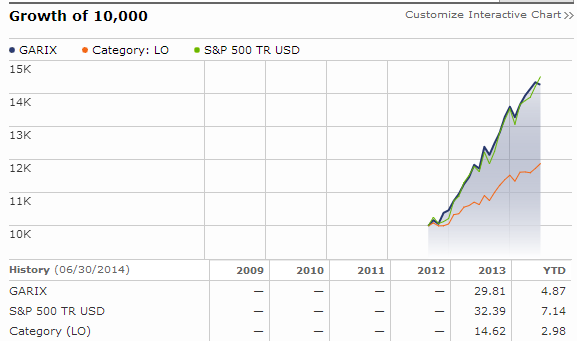Stanek Striving for Consistency in an Uncertain Bond Market
Post on: 16 Август, 2015 No Comment

Fri, 13 Mar 2015
Trying to time interest rates and move duration around is a fool’s game, says Baird’s Mary Ellen Stanek.
Video Transcript
Sarah Bush: Hello, this is Sarah Bush with Morningstar. Today, I’m joined by Mary Ellen Stanek from Baird Funds. Thanks very much, Mary Ellen, for joining us today.
Mary Ellen Stanek: Thanks, Sarah. Great to be here.
Bush: So, we’re talking about fixed income today, and I thought we would start with what’s been going on in the markets. There’s been a lot of speculation about when the Fed is going to raise interest rates. I thought maybe [you could start by talking] a little bit about your outlook right now.
Stanek: In terms of the outlook, we continue to be in a highly unusual environment, coming off of the financial crisis. Now, it’s year seven, and there is a lot of uncertainty still. When you look around the world, we are still challenged in the world for economic growth—top-line growth. The U.S. is actually producing some of the strongest growth in the world right now, and inflation remains under control.
So, when we pull it all together, we think the Fed does want to come off their extreme measures—their zero-interest-rate policy—and probably will start moving if they can, if they feel like they’ve got an opening [to slightly move off the zero-interest-rate policy] that they launched in late ’08 and have had in place since. That said, we don’t expect a significant rise in interest rates, again, because economic growth is quite muted and inflation remains under control.
Bush: That brings me to an interesting point: You have a view on interest rates, but your funds are run duration-neutral, which is a little bit unusual in this world of unconstrained portfolios. Could you talk a little bit about that philosophy and how you think about duration management?
Stanek: Sure. Duration is just a very quick, precise measure of a portfolio’s interest-rate sensitivity as interest rates change. Our approach is that we call ourselves structured fixed-income managers—and what do we mean by that? There are elements that are similar to an index or a passive strategy where we stay right at home, duration-neutral to the fund’s benchmark in terms of interest-rate sensitivity.
The active part of what we do is that we’re very opinionated about yield-curve positioning, sector allocation, and individual security selection of the portfolio relative to the benchmark while staying duration-neutral. And that’s how we try to hit a lot of singles—once in a while, a double. We’ll take a walk if we get it or a bunt if we get it. But we want to strive for a lot of consistency. Investors own bonds to lower overall volatility. They want to smoother ride. So, we look to have strategies that perform in a very consistent way. Trying to time interest rates and move duration around as a lot of active managers do, we think, is a fool’s game. It’s very tough to get those decisions correct in a consistent manner.
Bush: That said, where are you and your firm finding opportunities today in the bond markets?
Stanek: We’re finding opportunities across the curve. If you look at the Baird funds, we have an Ultra Short (BUBSX) or Short-Term (BSBSX), an Intermediate (BIMSX), a Core (BAGSX), or a Core Plus (BCOSX). And within each, we’re finding opportunities in spread products and credit, well diversified; in the structured product, asset-backed and mortgage-backed securities—again, very well diversified.
Generally, we’re eliminating very short Treasuries. Those are some of the most expensive securities in the universe. We still own Treasuries out a little longer, but then we disproportionately own the credit and asset-backed and mortgage-backed securities on the rest of the portfolio.
What this ends up doing for us is giving us a yield advantage on the portfolios relative to the benchmark. We also tilt and have a coupon advantage on our portfolios. So, we generate more of our return from cash flow coming off the underlying bonds in the portfolio. As rates, these are all bumper pads that we put on the portfolios, if you will, so that as rates at some point start moving back in a normalized fashion, we will do reasonably well. We’ll certainly participate as the duration of the portfolio would indicate, but we should provide a little more of a defensive characteristic on our portfolios.
Bush: We were talking earlier and you mentioned that a strategy across several of these funds is your roll-down strategy—something we hear about a lot from managers. Could you explain what a roll-down strategy is and what makes that attractive?
Stanek: Roll-down is a term bond managers like to use—we use a lot of jargon. Simply, what roll-down is is into an upward-sloping yield curve. So, it’s lower than intermediate- and longer-term rates. We look for spots on the yield curve where we can disproportionately put portfolio positions or own bonds that will, with the passage of time, roll down to lower-yielding, higher price points.
What does that mean in terms of portfolio total return? You earn your income—your coupon on your bonds—but you also get a little turbo-charge, if you will, because the bond’s price is now priced off a lower-yielding, higher price point. So, that’s why you want to take advantage of any roll-down available in the marketplace because it’s a very low-risk way to add value in terms of a bond portfolio. So, we look to try to capture that whenever we can.

Bush: Another thing we were talking about is that although rates in the U.S. are very low, they are even lower in developed markets overseas. What are the implications of that for a U.S.-based investor?
Stanek: That’s a great question because it is such an unusual environment. This would be one of those things that makes you scratch your head because, in other parts of the global-yield environment, we’ve actually got negative yields in parts of the world. So, while the U.S. Treasury yields are certainly nominally lower than they’ve been [historically], they’re still some of the highest sovereign yields out there. So, when we step back, what we think it also means is that, for nondollar investors, they will still be drawn to dollar-denominated Treasuries, both for hedging as a store of value or a store of wealth. So, we think it actually provides a good support for U.S. Treasuries even though nominal yields are quite low.
The negative real yields [are indicative] of how unusual this environment is economically and that parts of the world are struggling. It’s not [a matter of] what inflation looks like; it’s [a question of whether or not we’re] teetering on deflation, which is a very different, very difficult, dynamic condition for economies and markets to deal with.
Bush: All right. Thank you very much for joining us today, Mary Ellen.
Stanek: Thanks, Sarah.
Bush: For Morningstar, I’m Sarah Bush.
Morningstar Individual Investor Conference
March 21, 2015 | 9:00 a.m. CDT
Get a fresh outlook on the market and your investments at our FREE online conference. Join us for a day tailored to help individual investors strengthen their finances by uncovering strategies for building better portfolios from a variety of Morningstar’s analysts and noted outside experts.














